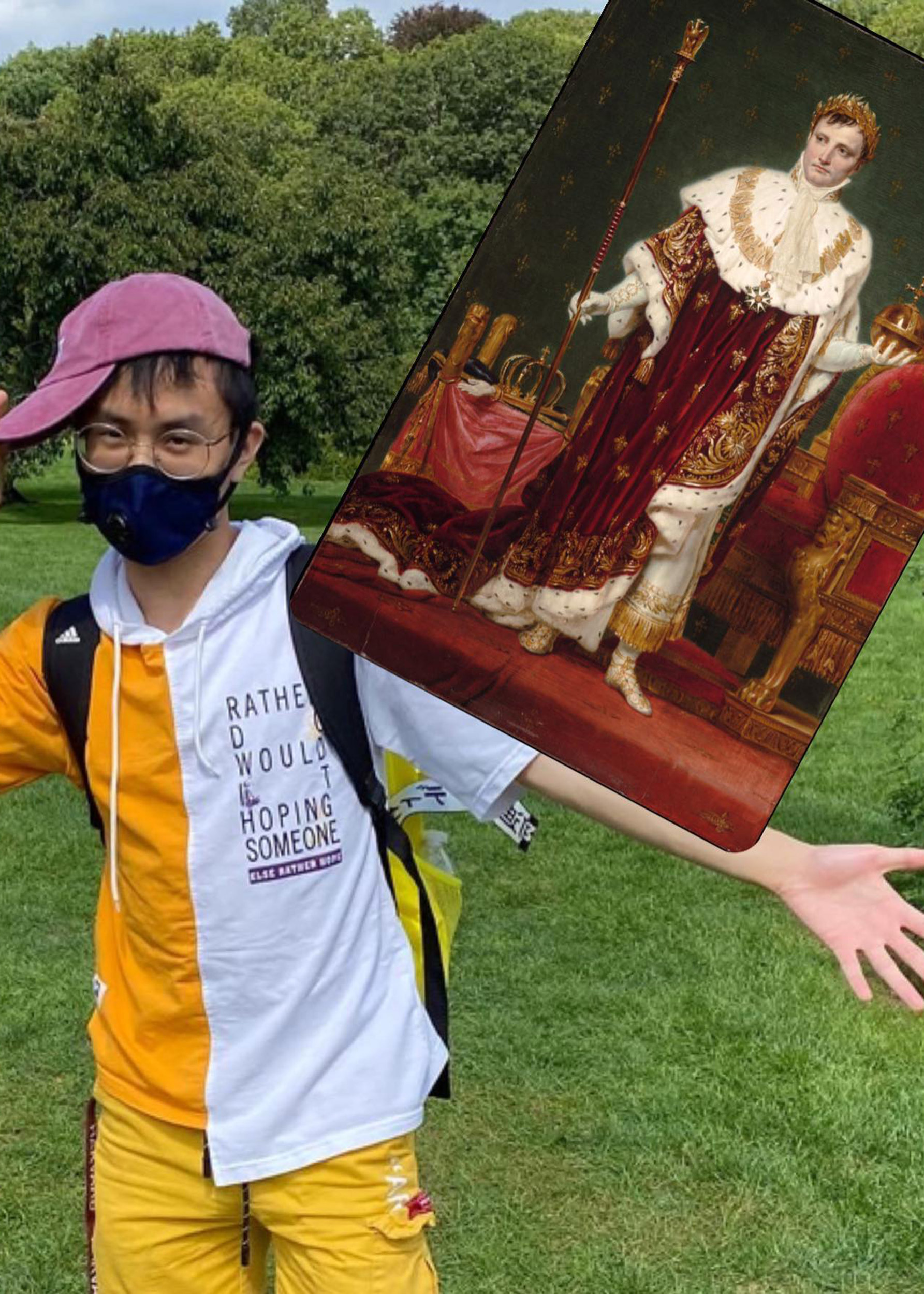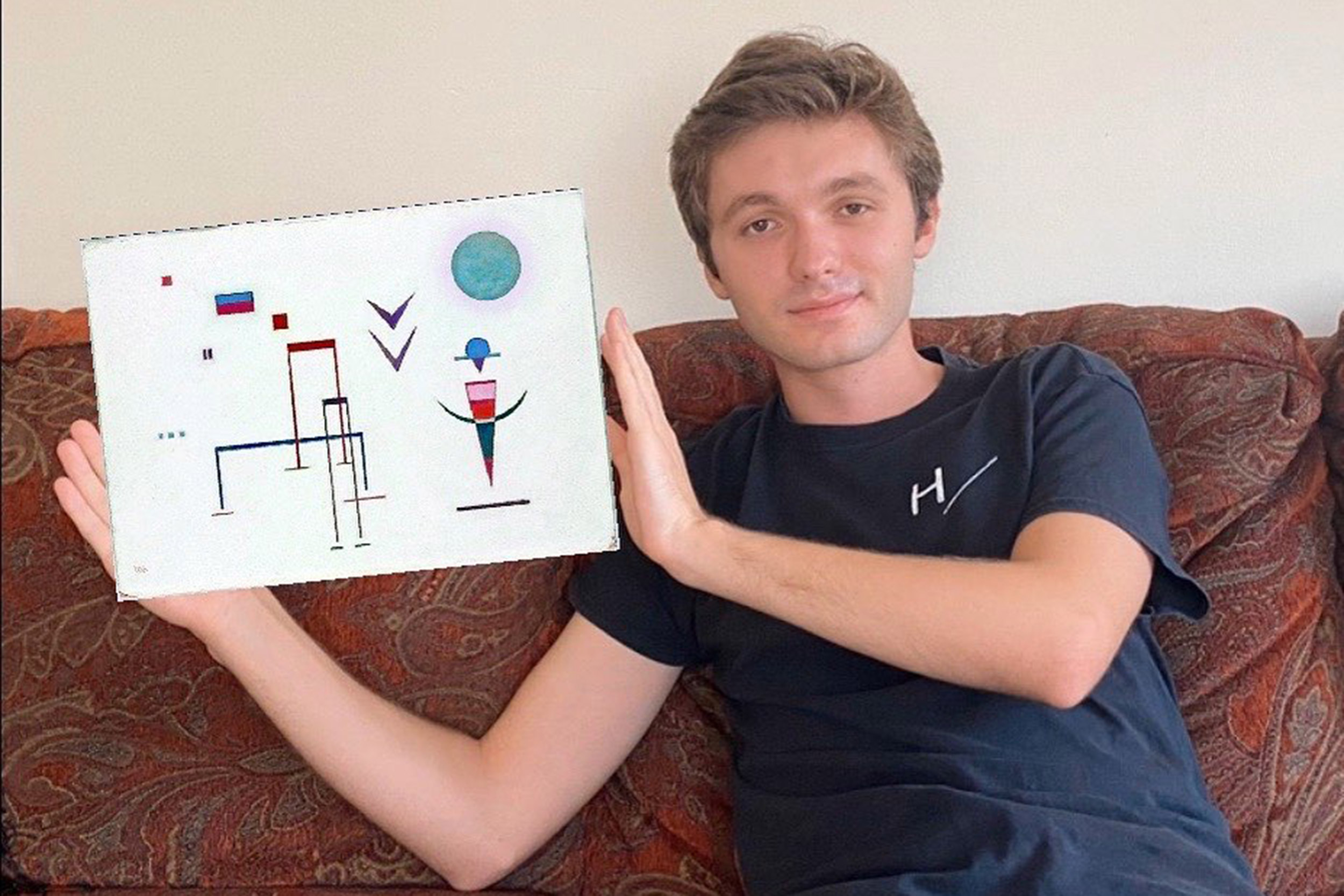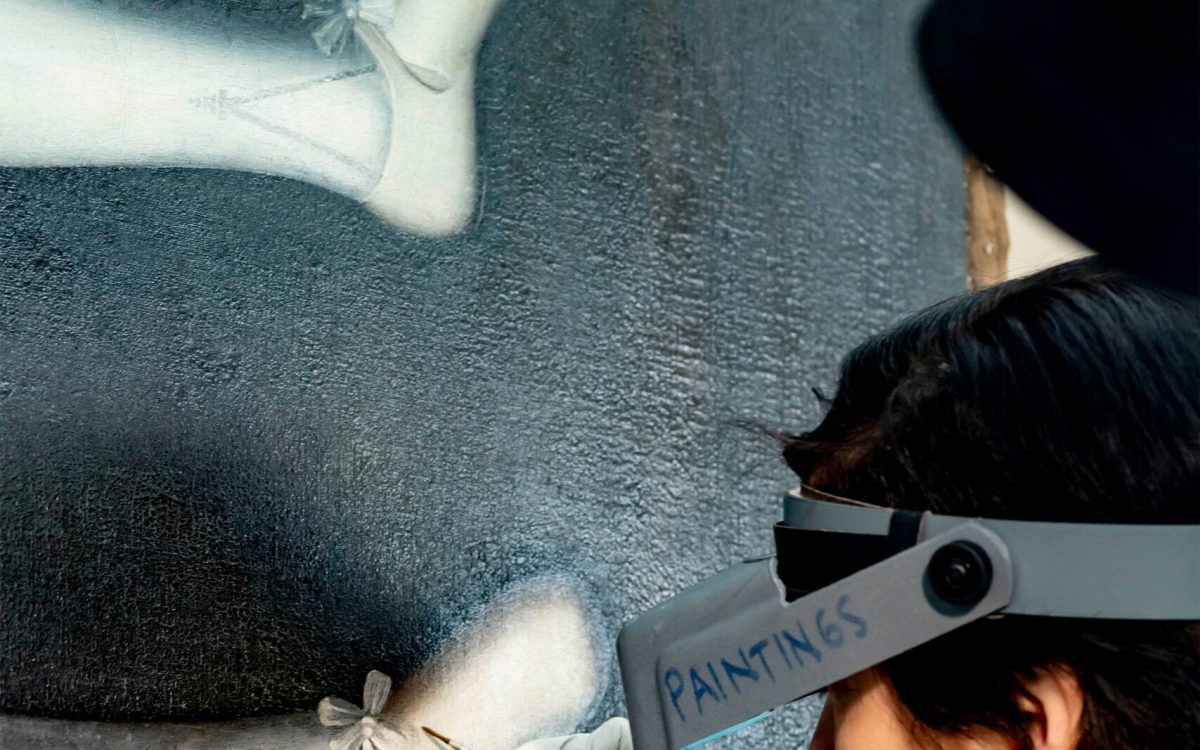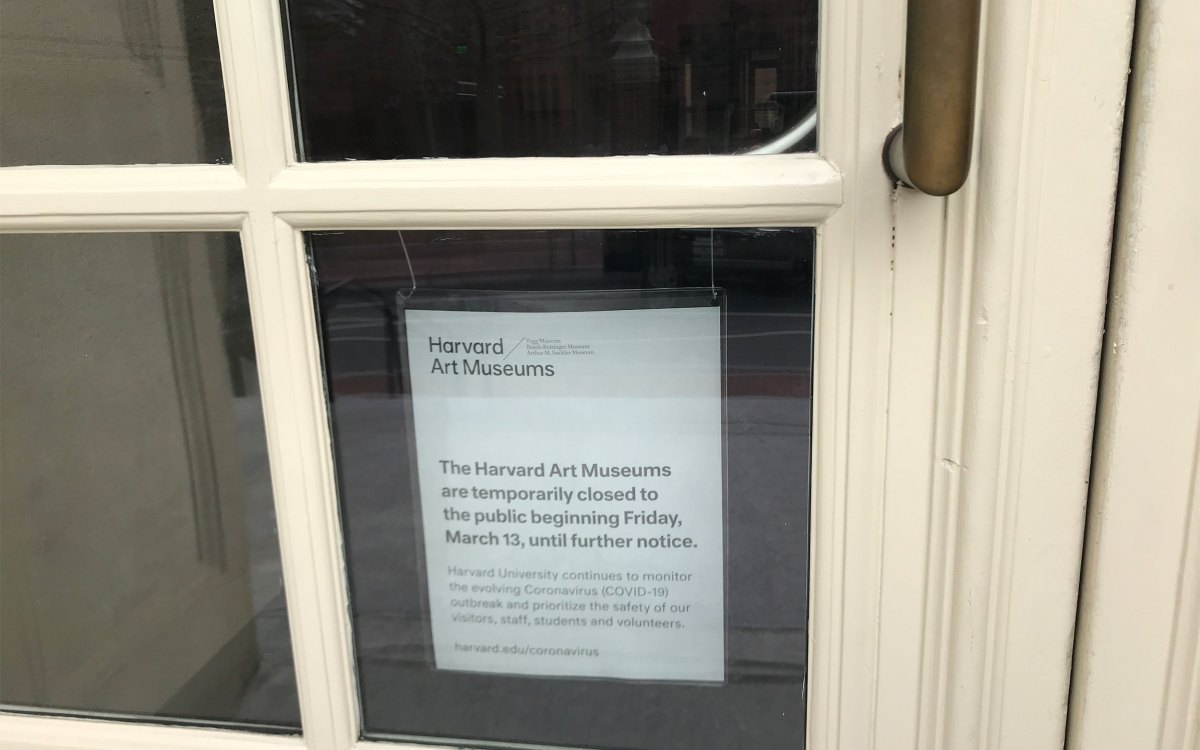Feeling close to art from miles away
Student guides, living away from campus, lead online Harvard museum tours

Senior Franklin Hang’s tour focuses on the topic of “Transcendence,” and on Instagram he is “holding” Jacques-Louis David’s “Emperor Napoleon I.”
Photos courtesy of Alexis Boo ’22
Craving a little Kerry James Marshall, Louise Bourgeois, Pablo Picasso, or Claude Monet from the comfort of your couch? You’re in luck.
The Harvard Art Museums are closed, but for the past several months a handful of art-loving University undergraduates, some located thousands of miles from campus, have been leading gallery tours over Zoom. The online events (like their on-site equivalents) are designed by the students and tie three works from the museums’ collection of more than 250,000 objects to a theme such as intimacy in art, the pull of the color blue, or light as an artistic medium.
The theme of Vlad Batagui’s tour “Art in Exile” seems fitting in the age of lockdowns. The tour highlights the ways in which art and artists get removed from their original cultural contexts, and includes a piece by the Romanian sculptor Constantin Brancusi, whose career blossomed in France.
Displacement is familiar territory for Batagui ’21, a joint chemistry and statistics concentrator, who has been leading tours from 5,000 miles away in his native Bucharest, Romania, since spring. But the distance makes no difference to the senior, who said he loves talking about art to people with “a very broad, diverse range of backgrounds,” wherever they may be.
It turns out, they are all over. Gallery restrictions limit in-person tours to 15, but on the web there’s room for everyone, with roughly 80 virtual visitors typically logging in for the weekly tours from across the U.S., with some from as far away as the U.K., China, Israel, Spain, and Dubai.
While the tours have proven popular, introducing hundreds of visitors to the collection, staff members were initially wary of the electronic format “because so much of the museums’ ethos is based on needing direct, physical engagement with original objects,” said Camran Mani, a fellow in the museums’ division of academic and public programs who supervises the student guides. “But with some adjustments, we’ve been able to gather a group of people for a conversation that does feel intimate.”
That is owing largely to the guides. They carefully craft their tours, selecting intriguing and even sometimes provocative themes, researching the objects in detail, and meeting regularly with fellow guides, museum curators, and staff as part of their training. The longstanding program is supported by the Ho Family Student Guide Fund and is open to concentrators in any discipline. The main requirement is a passion for art and for sharing that art with others.
Connecting over the internet is second nature for Harvard’s Generation Z student-guides who regularly look for new ways to keep their electronic audiences engaged, often incorporating other graphics or illustrations into their Zoom tours. “What we lose [being on site] is very much gained by this power of bringing in images from other sources that can aid our discussion and arguments that are being made about the piece,” said Batagui, who uses pictures of Brancusi’s later sculptures to highlight the artist’s creative evolution.
Vlad Batagui (with Wassily Kandinsky’s “Jocular Sounds”) leads his tour from 5,000 miles away in his native Bucharest, Romania.

From her home in Ottawa, Canada, Cecilia Zhou ’22 has refined the questions she asks during her “Visions of the Future” tour that focuses on three works spanning 700 years. Open-ended queries work well in person, said Zhou, but are trickier on Zoom, where people can feel self-conscious about typing their replies in the chat function. Instead, questions that elicit “one-word or rapid-fire responses” demand less of viewers, she said, and help her quickly “build to a larger point.”
Both the audiences and the guides gain from the extra effort. “I think of it as much as a program for the benefit for the student as I do for the public,” said David Odo, who directs the museums’ division of academic and public programs. “It’s helping them develop into lifelong learners and lovers of art.”
But the virtual tours aren’t the only online options driven by the art-loving undergrads. Student-generated social media content based on the collection has filled the guides’ Instagram, Facebook, and YouTube channels in recent weeks and includes a cooking demonstration involving sakuramochi, a traditional Japanese sweet inspired by works in the “Painting Edo” exhibition; a makeup tutorial based on Alexei von Jawlensky’s expressionist painting “Head of a Woman”; and a flower arrangement modeled after Pierre-Auguste Renoir’s “Spring Bouquet.”
Zhou, the creative mind behind the quirky makeup video, said she was eager to recreate Jawlensky’s “wonderful expressionistic strokes and colors,” with blush and bronzer. But the 12-minute clip is more than just a quirky how-to guide. “I figured it was actually a close looking exercise in disguise because so much of our tours are based on what is readily visible in the object,” said Zhou. Close looking, whether in person or online, she added, is also the key to better understanding art that can at first seem “deceptively simple.”
For dates and times of upcoming Student Guide tours, visit the Harvard Art Museums website.






